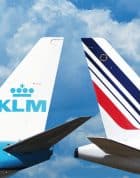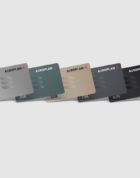In mid-May, United quietly devalued transatlantic awards on its MileagePlus program. At the time, it appeared that the hike had only affected flights between North America and Europe, and that the rest of the world was spared.
Unfortunately, the price increase has been implemented almost across the board, and MileagePlus redemptions to destinations across the world are now more expensive than they used to be.
United MileagePlus Increases Award Pricing
In mid-May, transatlantic flight awards operated by United and partner airlines were increased by at least 30% across the board with United MileagePlus. The hike mostly affected economy and business class awards, while premium economy pricing appears to have been spared.
Recall that MileagePlus has long done away with award charts and instead uses a form of dynamic pricing for flights operated by United and its partners. This leaves the door open for pricing to change at any time, and changes are a bit more difficult to spot than with programs that use a fixed pricing model.
To illustrate the extent of the no-warning devaluation, let’s take a look at a few examples.
Economy Saver awards for a flight from Washington DC (IAD) to Paris (CDG) now cost at least 40,000 miles, whereas previously, this route would’ve typically cost as few as 30,000 miles. This represents a 33% increase.

Meanwhile, a United Polaris Business Saver award on a flight from Washington DC (IAD) to Amsterdam (AMS) now costs at least 80,000 miles, whereas the same flight previously cost 60,000 miles, likewise representing a 33% increase.

United MileagePlus also applies dynamic pricing to awards with partner airlines, giving them free rein to increase prices at any moment. Unfortunately, partner awards weren’t spared from this round of devaluations.
For example, a flight with TAP Air Portugal from Washington DC (IAD) to Lisbon (LIS) is now priced upwards of 40,000 miles for economy and 80,000 miles for business. This is an increase from around 30,000 and 60,000 miles, respectively.

You can see similar trends for other Star Alliance partners, too. For example, a Swiss business class flight from New York (JFK) to Geneva (GVA) now costs 88,000 miles.

Since the initial round of devaluations, award price hikes have spread to routes across the world.
For example, a flight from San Francisco to Tokyo used to start at 38,500 miles in economy and 88,000 miles in business class with ANA. Now, the floor has been raised to 60,400 miles in economy and 110,000 miles in business class, which is a jump of around 57% and 25%, respectively.

A Saver award between North America and Sydney with United used to price out at 40,000 miles in economy or 80,000 miles in business class. Now, you can expect to pay a minimum of 55,000 miles in economy or 100,000 miles in business class, a jump of 37% and 25%, respectively.

It’s worth noting that some routes, such as domestic flights within the United States and within other countries, appear to have been spared from the devaluation for now. Flights between North America and the Middle East also still price out at the “old” rates, so if you have plans to fly to the Middle East, it’s best to book your flights now before the cost increases.
Should You Book Award Flights with United MileagePlus?
It’s worth noting that booking many flights through United MileagePlus wasn’t the best option before, and it’s now just become worse.
Clearly, this is a good opportunity become acquainted with other Star Alliance loyalty programs, if you haven’t done so already.
The first two programs that come to mind are Aeroplan, which is a transfer partner of American Express US Membership Rewards, Capital One, and Chase Ultimate Rewards, and Avianca LifeMiles, which is a transfer partner of Amex US Membership Rewards, Capital One, and Citi ThankYou Rewards.
With these two programs, you can expect Star Alliance partner awards to be priced lower than United MileagePlus. Let’s look at some examples.
A one-way business class award with TAP Portugal from Washington, DC (IAD) to Lisbon (LIS) costs 60,000 Aeroplan points or 63,000 LifeMiles, versus 88,000 miles with MileagePlus.


Similarly, a Swiss business class flight from New York (JFK) to Geneva (GVA) is also priced 60,000 Aeroplan points and 63,000 LifeMiles, as opposed to 88,000 MileagePlus miles.


Some quick math shows that the cost of the same flight is around 30,000 points less when booked with Aeroplan or LifeMiles instead of United MileagePlus.
One of the best Aeroplan sweet spots is flying from Seattle or Vancouver to Japan in business class for just 55,000 points. Even if you’re departing from other parts of North America, you can expect to pay just 75,000 points or 90,000 LifeMiles, to get to Japan, while the same flight with ANA booked through United now costs 110,000 miles.

You’ll also get a much better deal on booking an award flight to Australia by using Aeroplan or LifeMiles instead of MileagePlus. A direct flight from San Francisco to Sydney in United Polaris business class costs 75,000 Aeroplan points or 90,000 LifeMiles, as opposed to 100,000 MileagePlus miles.


As illustrated by the examples, simply diverting your credit card points to another Star Alliance program could save you a tidy sum of points or miles versus booking the same flight with United MileagePlus.
Between Aeroplan and LifeMiles, Aeroplan is typically the better option for award bookings, given that the points are easier to come by and the program’s many other features.
Conclusion
United has devalued its MileagePlus program by increasing award prices on its own flights and on partner airlines. The devaluation hit transatlantic awards first, but now applies to most parts of the world.
Booking transatlantic and transpacific flights with MileagePlus wasn’t the best option before, and now it has only gotten worse. Aeroplan and Avianca LifeMiles price awards on partners like TAP Portugal and ANA much lower than United MileagePlus does, so it’s better to focus your efforts there instead.
Devaluations are the primary reason why you shouldn’t hold onto miles and points for too long. With post-pandemic travel demand not showing any signs of letting up, we’re likely to see more devaluations to come in the future, which is unfortunate.



















